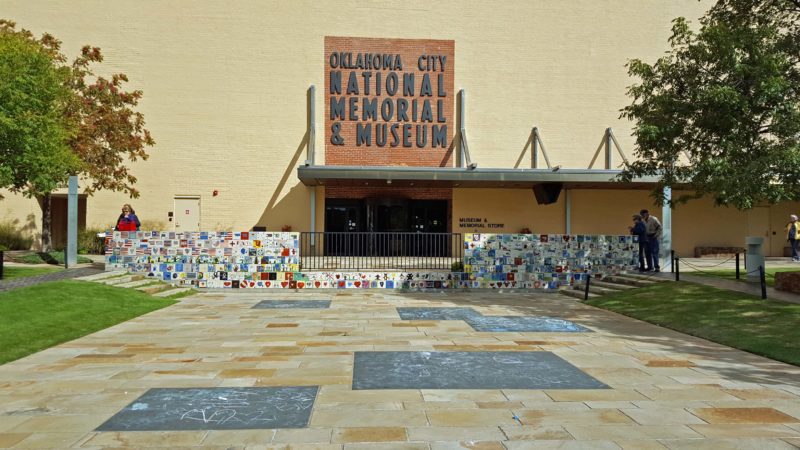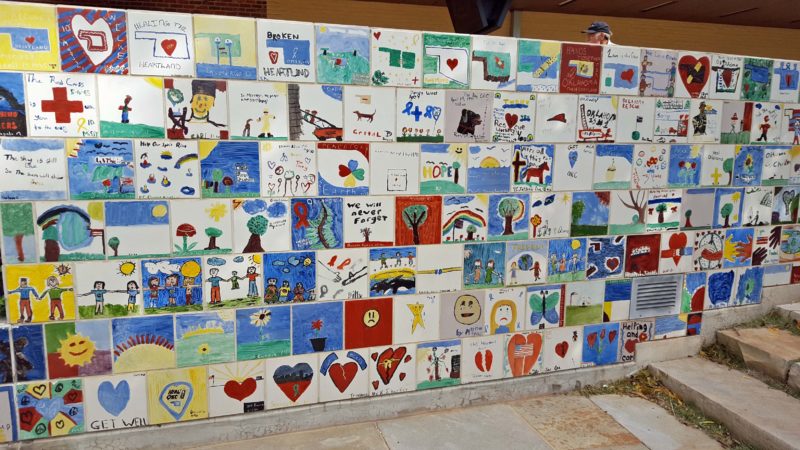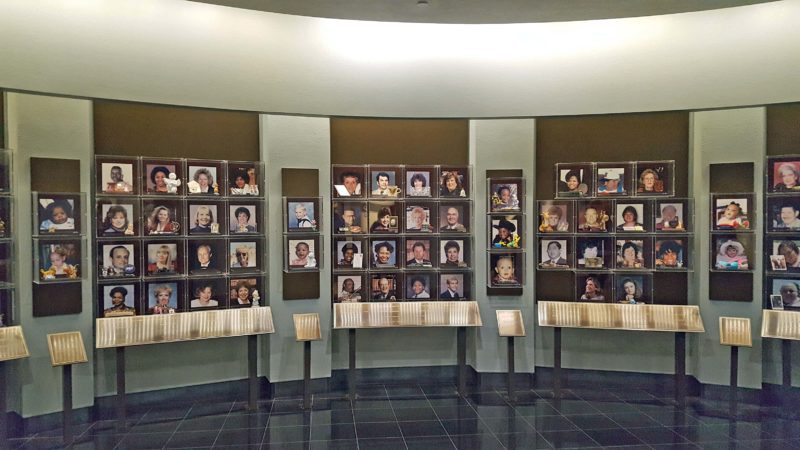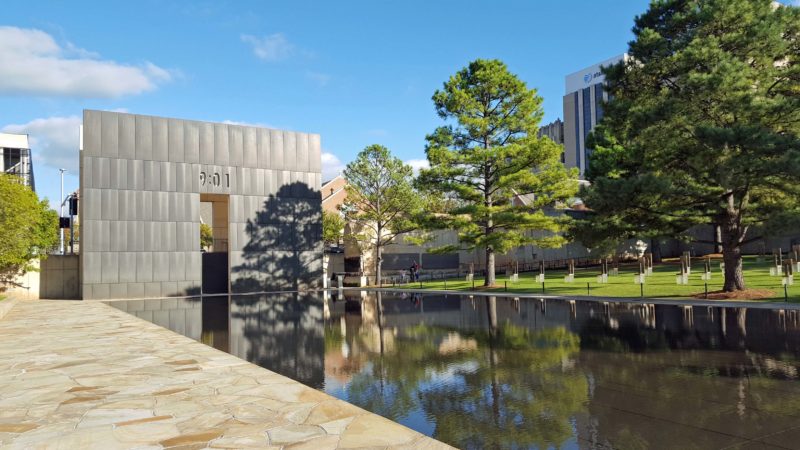Ted and I have been enjoying the light-hearted attractions we’ve visited on this trip, such as the Blue Whale of Catoosa, the Golden Driller, Pop’s, etc. Today, we visited a somber remembrance: the Oklahoma City National Memorial and Museum.
This memorial was created in memory of the April 19, 1995 bombing of Oklahoma City’s Alfred P. Murrah Federal Building. Reading the texts; listening to a tape recording of a hearing in the building that was interrupted by an explosion and screams; watching videos and listening to survivors describe their experiences; and looking at the pictures of destruction, were emotionally difficult. If you have ever visited a Holocaust exhibit, you know what I mean.
After more than three hours, Ted and I had not seen every exhibit, but I asked him if we could leave. I couldn’t bear to hear any more about such a tragedy and I was afraid I was going to begin sobbing if I heard one more personal story about that day. My mind cannot comprehend how people (e.g., Timothy McVeigh in this case, mass shooters today) can do such horrendous things to other people. While I understand that thoughts and prayers are supportive actions and that we must never forget, I cannot help but wonder when we, as a nation, will finally find the courage to make changes to help prevent these tragedies.
Having said that, the exhibit is extremely well done and deserving of visitors’ time.

The entrance to the Memorial includes a colorful tile wall and chalk and chalkboards on the plaza for visitors to write messages.

A close-up of the tile wall. Thousands of tiles were sent by children from around the world to Oklahoma in 1995. Some of those tiles were included as part of this permanent display.

This is a well-known photograph of the destruction caused by the bombing. The crater created by the bomb’s explosion in front of the building was eight feet deep. The two day care centers (children) were on the second floor. One woman said that the eight other women she was talking with simply disappeared from in front of her when the bomb exploded and the floor collapsed beneath them.

Here is one example of what the destruction of ordinary objects looks like. There were other displays of bomb-ravaged building components and of personal items such as watches, key chains, jewelry, purses, etc. that had been collected from the rubble.

This Wall of Honor includes photos of the 168 people who were killed in the bombing.

The wall on this end of the reflecting pool is called the “9:01 Wall.” It represents the minute before the bomb exploded and changed the lives of so many people. At the opposite end of the pool is the “9:03 Wall,” representing the minute when the healing began.

“The Field of Empty Chairs.” The 168 chairs represent the 168 people who were killed on April 19, 1995. They are arranged in 9 rows, symbolizing the 9 floors of the building. Each person’s chair–with small chairs representing children–is positioned in the row that corresponds to the floor on which they worked or were visiting. The 5 chairs on the westernmost end of the Field designate those who were killed outside the building. The wall surrounding three sides of this Field is the original wall of the Alfred P. Murrah Federal Building.